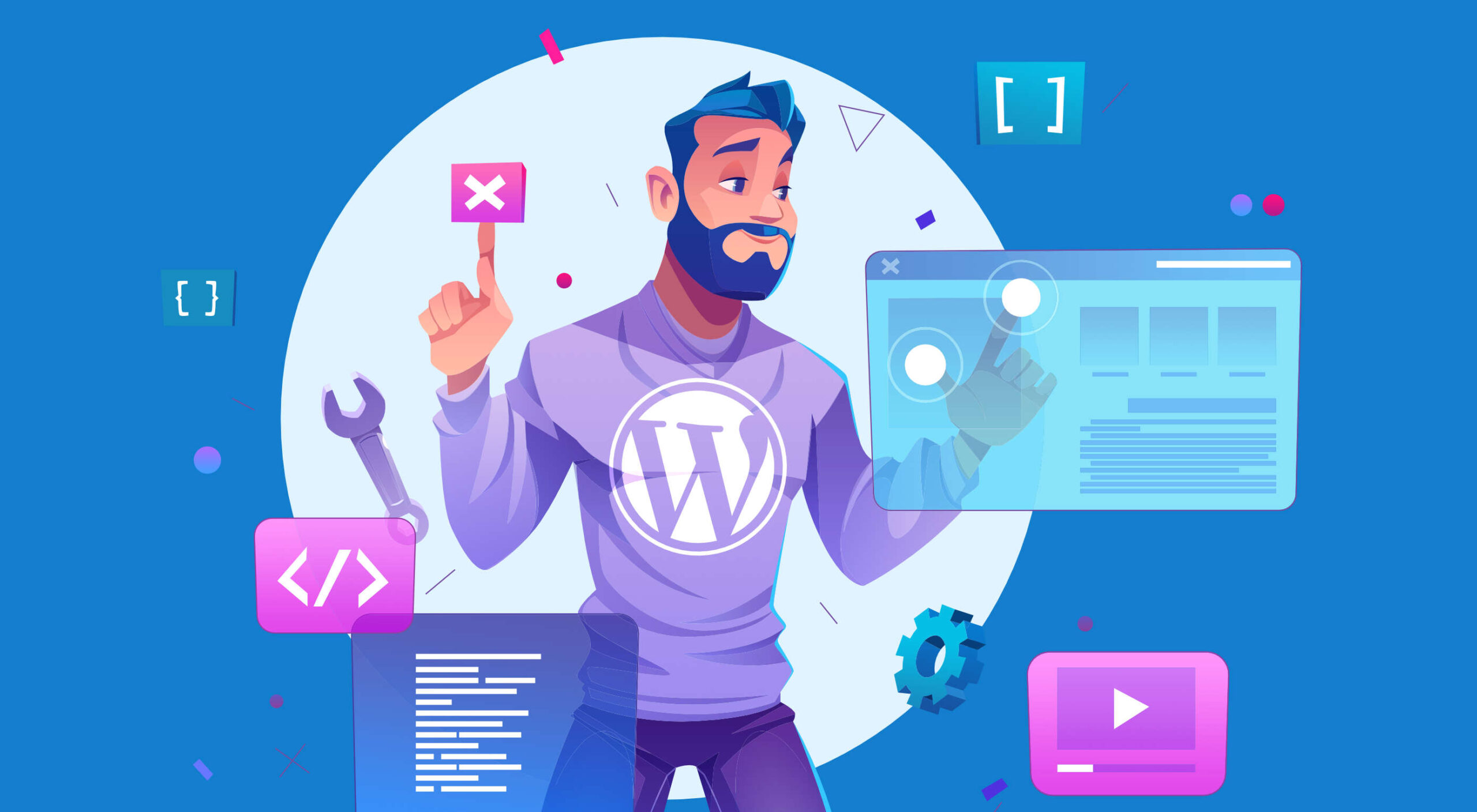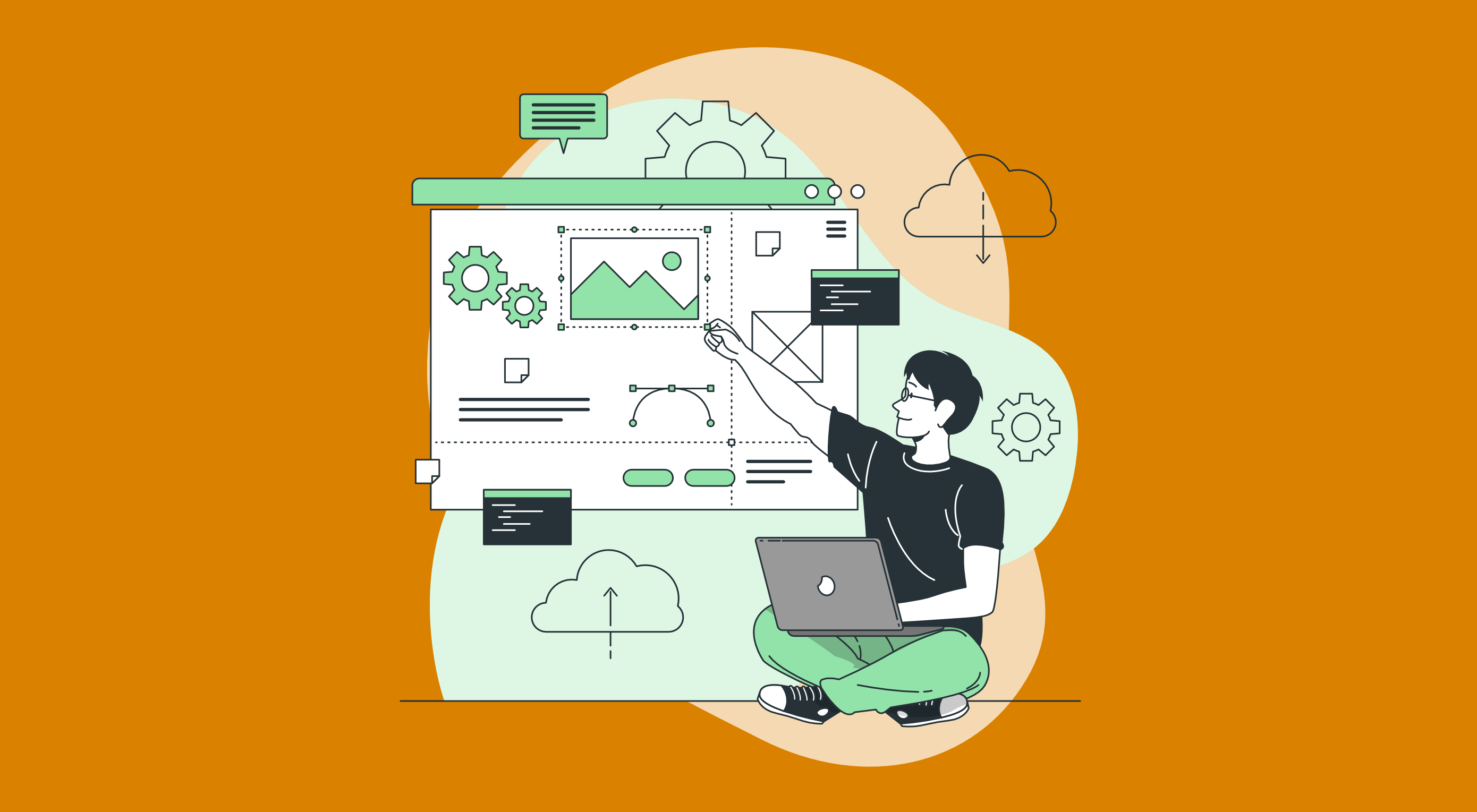 I bet you didn’t know that WordPress is the world’s most popular website builder and content management system (CMS).
I bet you didn’t know that WordPress is the world’s most popular website builder and content management system (CMS).
Just kidding…of course, you did! But that’s not all there is to know about WordPress, so take our ridiculously challenging WordPress quiz and see how much of an expert you are…
(Scroll to the bottom for the correct answers.)
1. What is WordPress?
- SEO plugin to check your keyword density
- AI tool to create illustrations
- Online software to create websites
- A coffee shop in Canada
2. What is the number of websites using WordPress?
- 75 million
- 1.3 billion
- 2 thousand
- 7.1 billion
3. WordPress has a tradition of naming its major releases after:
- American presidents
- Famous jazz musicians
- British kings
- Heavy metal bands
4. How many websites are created on WordPress per day?
- Two websites
- 20,040 websites
- Over 500 websites
- 60-80 websites
5. What is the correct WordPress website address?
- WordPress.org
- WordPress.us
- WordPress.com
- WordPress.au
6. Who is the WordPress CEO?
- Elon Mask
- Bill Gates
- Leonardo DiCaprio
- No CEO
7. Which US government website is using WordPress?
- WhiteHouse.gov
- U.S. Embassy Websites
- State.gov
- All of them
8. How many languages is WordPress available in?
- 21
- 72
- 78
- 1
9. What is the most downloaded WordPress theme of all time?
- Divi
- Gutenberg
- WoodMart
- Astra
10. How many Fortune websites are using WordPress?
- 11
- 25
- 90
- 78
11. What is the average salary of a WordPress developer per year?
- $100k
- $56k
- $24k
- $201k
12. When was the first WordPress version released?
- 1999
- 2010
- 2007
- 2003
Answers
1. What is WordPress? – 3. WordPress is online, open-source software that you can use to create websites.
2. What is the number of websites using WordPress? – 2. In 2021, WordPress powers over 1.3 billion websites all over the web, and this number continues to grow.
3. WordPress has a tradition of naming major releases after – 2. WordPress has a habit of naming its big releases after famous jazz musicians. For example, in the first version of January 2004, they called 1.0 (Davis), named after American trumpeter Miles Davis. Another version of May 2004 was named 1.2 (Mingus).
4. How many websites are created on WordPress per day? – 3. Over 500 websites are created on WordPress every day. At the same time, only 60-80 sites are built on popular platforms like Squarespace and Shopify. Besides, every second, 17 new blog posts are published on WordPress!
5. What is the correct WordPress website address? – 1. The fact that always confuses beginners is that WordPress.org and WordPress.com are entirely different companies that provide separate services. WordPress.org is the real WordPress everyone talks about that helps you to build websites. While WordPress.com is a hosting provider created by Automattic, the co-founder of WordPress.
6. Who is the WordPress CEO? – 4. WordPress is a free, open-source project. That’s why it does not have a CEO; volunteer developers run the project from all over the globe. This is the reason anyone can submit a report about a bug or suggest features.
7. Which US government website is using WordPress? – 4. The correct answer is all of them. All major websites of the US federal government use WordPress for their websites. The list includes all government sites of big and small cities, counties, universities, and high schools.
8. How many languages is WordPress available in? – 2. The Default WordPress language is English; however, the platform provides a fully translated platform with plugins that allow you to change your site’s language in seconds. The software has been successfully used in over 72 languages and can be modified for more!
9. What is the most downloaded WordPress theme of all time? – 4. Astra is the most downloaded WordPress theme of all time. Astra is claimed to be the most potent and fast theme trusted by many popular brands. Besides, the theme earned over $30M.
10. How many Fortune 500 websites use WordPress? – 1. 11 Fortune websites, such as Walt Disney Company, ABM Industries, and 21st Century Fox, use WordPress.
11. What is the average salary of a WordPress developer per year? – 2. The average WordPress developer earns $56,000 per year, according to Payscale.
12. When was the first WordPress version released? – 4. The first version of WordPress was released on May 27, 2003, which makes WordPress much older than Twitter and Facebook.
Featured image via upklyak on Freepik
The post Ridiculously Challenging WordPress Quiz first appeared on Webdesigner Depot.


 The purpose of a website is to reach new customers and keep current ones engaged. Therefore, customer-first should be at the top of your list for design features. After all, without your clients, your business won’t grow or succeed.
The purpose of a website is to reach new customers and keep current ones engaged. Therefore, customer-first should be at the top of your list for design features. After all, without your clients, your business won’t grow or succeed.


 Moving from studying design into
Moving from studying design into 




